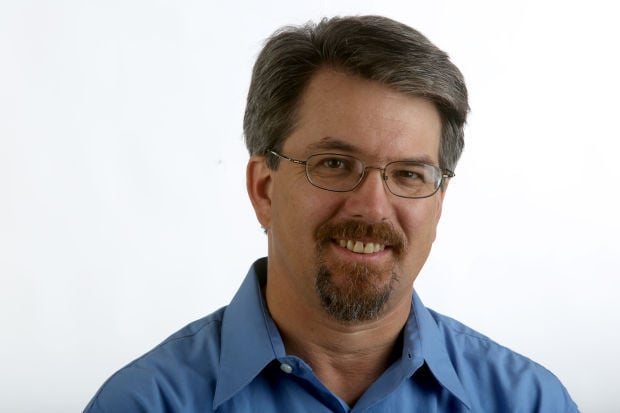This story seems somehow familiar.
The city closes a downtown park in order to eject a group of homeless people who have been camping there.
City workers clean the place up. The homeless people go away for a while. So what happens next? Do they return again?
For the second time in three months, the city of Tucson has wrested control of Veinte de Agosto Park downtown from homeless people who were camping there. Sunday’s action was an overdue move — the park was becoming disgusting again, lined with people’s junk, stinking of urine.
But it was also an incomplete effort. To grasp that, all you have to do is go a block north from the park, to Jacome Plaza in front of the main library downtown. That’s where you’ll find many of the same people who up until last weekend were spending days and even nights in Veinte de Agosto Park and on adjacent sidewalks.
Selina Hubbard was there at Jacome Plaza on Tuesday morning. She came to “find a place to chill during the day,” she told me.
“You gotta find somewhere to go,” she said.
That’s the thing. These people have to have somewhere to go. By closing one park, you’re just moving the problem to another place.
The timing of the city’s latest move was especially unfortunate. On Saturday, the city’s contract with Central City Assembly of God Church expired. The church, through the city’s funding, had been providing a place to sleep for an average of 50 people a night since the first time the so-called “Safe Park” camp at Veinte de Agosto Park was closed, in March.
As I wrote last week, CCA was a “low-demand” shelter where homeless people could stay whether they were sober or not, as long as they’re following shelter rules and not doing drugs or alcohol on site. Only one other facility in Tucson, with 15 beds, is also low-demand.
“There is no ‘solution,’ ” Councilman Steve Kozachik told me Tuesday, “but to the extent that we take an option off the table at the same time we’re closing the park, it seems like we’re taking two steps backward.”
That’s true, and yet there are inspired or innovative people in Tucson who are trying to offer options that, if they aren’t solutions, at least present new alternatives for this persistent problem.
Michele Ream has formed a 501(c) 3 nonprofit called Community Supported Shelters Tucson, intending to build huts here for homeless people. This is micro housing — basic shelter, a place for the residents to store their belongings, a secure spot to sleep, a bathroom, a reliable place to receive services or be found.
“It could be a new framework for affordable housing for the very, very low income people,” Ream said. "Oftentimes if you’ve been living in a wash for 10 years, you can’t just go to living in an apartment."
The huts are very low cost — from a few hundred dollars to $1,000 or so. The idea is to recruit churches, neighborhood groups or others to allow one or two huts on their property, Ream said. In places with willing landowners and a little more space, “villages” of 10 or 15 huts could be built.
Of course, the city would have to make allowances for such structures under its zoning codes. Ream said she’s speaking with city officials about what would be needed to allow for the huts under the code.
This is the kind of innovative approach the city should be encouraging. But there are even more obstacles: To get funding from the city’s Emergency Solutions Grant program, a group must have existed and provided homeless services for three years. Ream, who has worked for the Primavera Foundation for years, just founded her group in January.
Davide Ferrari of CCA Church just lost his city funding, but he hasn’t given up, either. He’s looking for ways to resume offering shelter services, with or without the city.
“My biggest issue is that I need to make sure I have neighborhood support,” Ferrari told me Tuesday.
Council member Richard Fimbres, who represents that area, said he can support Ferrari in re-establishing the shelter as long as he addresses complaints made by residents of the adjacent Barrio Viejo and Barrio Santa Rosa.
On July 7, at Kozachik’s request, the City Council will consider a ban on “urban camping” that would prohibit people from storing belongings or setting up tents on sidewalks or in other public property. The idea is to give officials a better lever to prevent more camps from springing up.
But again, this gives no place for the people to go. It would be justifiable for the city to continue rousting people from certain parks and banning camping if there were low-demand shelters, huts or other options for the people staying there.
The city does spend millions of its own or federal dollars on providing services to homeless people. But there’s a lack of creativity that makes it seem more likely there will be additional rounds of homeless campgrounds being established, closed, cleaned out and re-established.
As Christopher Gates, who has slept many nights at Veinte de Agosto Park, told me Tuesday at the library plaza: “The city needs to be proactive instead of reactive.”





